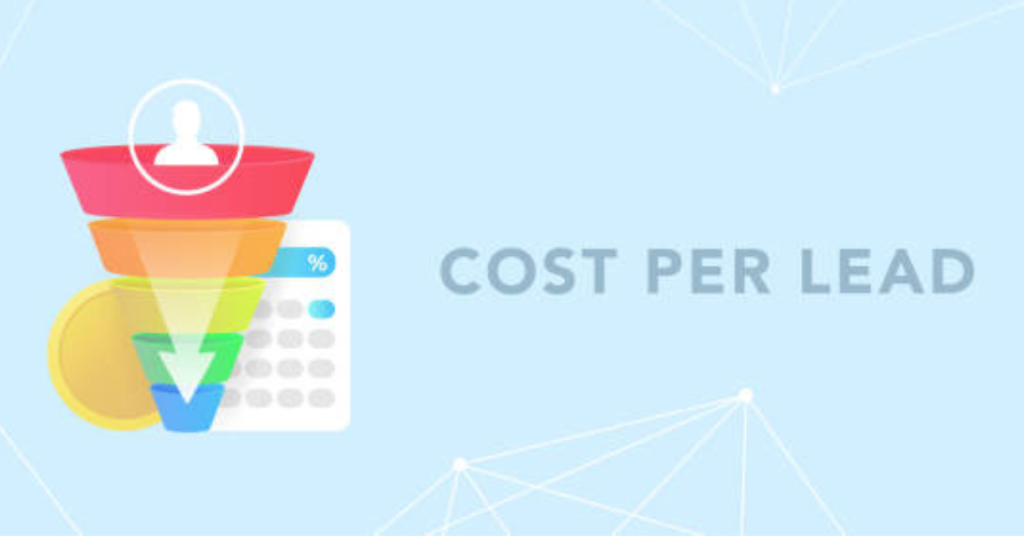What Is Cost per Lead (CPL) in Marketing
Cost per Lead (CPL) is a marketing metric that measures the average cost incurred by a company to acquire a potential customer’s contact information, typically including their name, email address, and phone number. The formula for calculating CPL is Total Advertising Spend ÷ Total Number of Leads Generated. CPL is an essential metric for measuring the effectiveness of a company’s marketing campaigns and helps to optimize their lead generation strategies for better ROI.

The Importance Of Cost Per Lead
Measuring marketing campaign effectiveness
Optimizing marketing strategy
Forecasting revenue
Accountability
How to Calculate the Cost Per Lead
To calculate the cost per lead (CPL), you will need to follow these steps:
Determine your total advertising spend: This includes all expenses associated with your lead generation campaigns, such as ad spend, email marketing, and other promotional costs.
Calculate the number of leads generated: This can be done by tracking the number of inquiries, sign-ups, or other actions that constitute a lead.
Divide the total advertising spend by the number of leads generated: This will give you the cost per lead. The formula is:
Total Advertising Spend ÷ Total Number of Leads Generated = Cost Per Lead
For example, if a business spends $1,000 on advertising and generates 100 leads, the cost per lead would be $10 ($1,000 ÷ 100 = $10).
It’s important to note that the cost per lead will vary depending on the industry, target audience, and the marketing channels used. It’s also essential to measure and track the cost per lead over time to identify trends and optimize lead generation campaigns for maximum ROI.
Measuring and Managing Cost Per Lead
Measuring and managing cost per lead (CPL) is essential for optimizing lead generation campaigns and ensuring a positive return on investment (ROI). Here are some tips for measuring and managing CPL:
Track and analyze the right metrics: In addition to calculating CPL, it’s essential to track other metrics that impact lead generation, such as conversion rates, click-through rates, and engagement rates. Analyzing these metrics allows you to identify which marketing channels and tactics are most effective.
Set realistic targets: Set targets for your CPL based on your business goals, industry benchmarks, and historical data. This will help you stay on track and make data-driven decisions about your lead-generation campaigns.
Optimize your marketing mix: Continuously test and refine your marketing channels and tactics to find the most effective combination for generating leads at the lowest possible CPL.
Nurture leads effectively: Focus on building relationships with your leads through email marketing, social media engagement, and other tactics that keep them engaged and interested in your brand. This can lead to higher conversion rates and a lower CPL over time.
Monitor your ROI: Regularly measure and monitor your ROI to ensure that your lead generation campaigns are generating a positive return. If your CPL is too high, consider adjusting your strategy or tactics to reduce costs and improve ROI.
Final Thoughts
Cost per Lead (CPL) is a crucial metric for measuring the effectiveness of lead generation campaigns and optimizing marketing strategies. By measuring CPL and analyzing related metrics, businesses can identify which marketing channels and tactics are most effective, set realistic targets, optimize their marketing mix, nurture leads effectively, and monitor ROI.
It’s important to remember that CPL is not the only metric that matters, and it should be viewed in conjunction with other metrics like conversion rates, click-through rates, and engagement rates. By focusing on all of these metrics and continuously testing and refining marketing strategies, businesses can improve their lead generation efforts, lower their CPL, and achieve better ROI.
Ready to boost your lead generation? Contact SPEEDFORCE DIGITAL today to learn more about our cost per lead services and start seeing results!
Frequently Ask Questions
1. What is a good CPL?
A good CPL will vary depending on the industry, target audience, and marketing channels used. As a general rule of thumb, a CPL that is lower than the customer lifetime value (CLV) is considered good.
2. What are some common mistakes when measuring CPL?
Some common mistakes when measuring CPL include not tracking all of the associated expenses, not tracking the right metrics, not setting realistic targets, and not analyzing the data effectively.
3. How can I improve my lead conversion rates?
To improve lead conversion rates, focus on building relationships with your leads, providing value through content and other offerings, and offering clear calls to action that make it easy for leads to take the next step.
